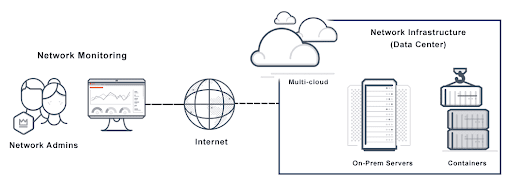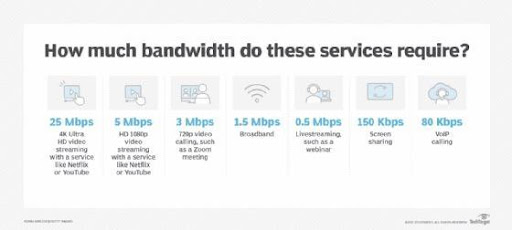Providing a seamless broadband experience is crucial for businesses and individuals who rely on the Internet for communication, entertainment, and work. A seamless broadband experience means that internet users can access the internet without interruption and with fast and reliable speeds. In this article, you will gain a comprehensive understanding of the ways in which network services, infrastructure, and troubleshooting techniques contribute to delivering a seamless broadband experience without any interruptions.
Contents
Importance of Network Services
Network services play a crucial role in providing a seamless broadband experience. These services include internet service providers (ISPs), network infrastructure, and troubleshooting techniques. ISPs are responsible for providing internet access to customers and ensuring that the internet connection is reliable and fast. Without a reliable internet service provider, customers may experience disruptions in service, slow internet speeds, and a lack of customer support. Additionally, network infrastructure includes routers, modems, and other equipment that is necessary for internet access.
A well-maintained network infrastructure ensures that the internet connection is reliable and fast and that there are no bottlenecks in the network that could slow down internet speeds. Finally, troubleshooting techniques are used to identify and resolve any issues that may arise with the network. This could include identifying and resolving equipment failures, network congestion, or security threats. By having a reliable network service provider, a well-maintained network infrastructure, and effective troubleshooting techniques, businesses and individuals can ensure a seamless broadband experience.
Over the past few years, consumer behavior and expectations regarding internet usage have undergone significant changes. The need for reliable and constant internet access has become more important than ever as remote working and online learning have become the norm. According to a 2018 PWC survey, internet performance drops were a concern for a third of broadband customers, and more recently, Cisco’s Broadband Index 2022 report found that over 75% of surveyed consumers in the US and Canada consider reliability as the top priority for their broadband service.
Network Security

Figure 1: Network Security Characteristics
Image Source: lanworks.com
Network security is critical in today’s digital age, where the internet is a vital part of our daily lives. Businesses and individuals must ensure that their networks are protected from hacking, malware, and ransomware threats. This includes implementing security measures such as firewalls, antivirus software, and intrusion detection systems. It is also important to keep the network infrastructure and software up-to-date to ensure that any vulnerabilities are patched. Additionally, it is important to educate employees and users about best security practices, such as creating strong passwords and not clicking on suspicious links. Businesses and individuals can protect their networks by implementing strong network security measures and ensuring a seamless broadband experience.
Troubleshooting Techniques
Troubleshooting techniques are used to identify and resolve any issues that may arise with the network. These techniques include testing the internet connection, checking for equipment failures, and identifying potential security threats. Troubleshooting techniques can help identify the root cause of the issue and provide a solution to resolve it. Additionally, it is important to have a process in place for troubleshooting issues and to have the necessary tools and resources available to resolve any issues that may arise quickly. By having effective troubleshooting techniques in place, businesses and individuals can ensure that any issues with their internet connection are resolved quickly and effectively, leading to a seamless broadband experience.
Network Monitoring

Figure 2: Network Monitoring Architecture
Image Source: avinetworks.com
Network monitoring is an important tool that can be used to identify and resolve any issues that may arise with the network. Network monitoring software can be used to track the performance of the network and identify any potential issues. This includes monitoring the speed of the internet connection, the internet’s availability, and the network infrastructure’s status. Network monitoring can also provide alerts when an issue is identified, allowing for a quick resolution. Additionally, network monitoring can provide valuable insights into network usage, bandwidth requirements, and potential security threats. By using network monitoring tools, businesses and individuals can proactively identify and resolve any issues with their internet connection, leading to a seamless broadband experience.
Upgrading Network Infrastructure
Regular maintenance and upgrades of can prevent issues from arising and ensure that the internet connection is always running at optimal performance. Upgrades to network infrastructure can include replacing outdated equipment, adding new equipment, and upgrading software. It is important to stay up-to-date with the latest technology and best practices to ensure that the network infrastructure can handle the current and future demands of the organization. Additionally, upgrading network infrastructure can improve security, increase bandwidth, and improve overall network performance. By regularly upgrading network infrastructure, businesses and individuals can ensure a seamless broadband experience.
Optimising Router and Modem Settings
Optimizing the settings on your router and modem can help improve the overall performance of your internet connection. This includes adjusting the channel, enabling Quality of Service (QoS) settings, and disabling any unnecessary features. It is also important to change the default login credentials to prevent unauthorized access to the network. Optimizing the settings on your router and modem can improve your internet connection’s speed and reliability. Additionally, it’s important to configure the router and modem to support the latest technologies, such as IPv6, and to ensure that they are compatible with the other devices on the network.
Network Capacity Planning
Network capacity planning is the process of determining the amount of network resources that are needed to support the current and future needs of an organization. This includes forecasting network traffic, identifying potential bottlenecks, and determining the necessary upgrades to the network infrastructure. Network capacity planning is essential for providing a seamless broadband experience, as it ensures that the network can handle the current and future demands of the organization. This can include factors such as peak usage times, bandwidth requirements, and the number of connected devices. By properly planning for network capacity, organizations can avoid overloading the network and ensure that their internet connection is always running at optimal performance. Additionally, network capacity planning can help organizations anticipate future network demands and make necessary upgrades before issues arise.
Managing Bandwidth

Figure 3: Bandwidth Requirements for Various Services
Image Source: techtarget.com
Managing bandwidth is essential for ensuring a seamless broadband experience. Bandwidth refers to the amount of data that can be transmitted over the internet at one time. Managing bandwidth can include limiting the number of devices that are connected to the network and setting limits on the amount of data that can be used. This can help ensure that the internet connection is always running at optimal performance and that there are no bottlenecks in the network that could slow down internet speeds. Additionally, businesses and organizations should monitor their bandwidth usage to ensure they have enough capacity to handle peak usage times and plan for future growth. By managing bandwidth effectively, businesses and individuals can ensure that their internet connection is always running at optimal performance, leading to a seamless broadband experience.
Providing Technical Support
Providing technical support is essential for a seamless broadband experience. Technical support is something that the ISP or a third-party provider can offer. Technical support can include troubleshooting and resolving issues that may arise with the network, providing advice on optimizing the network, and answering any questions customers may have. Additionally, it is important to have a process in place for providing technical support and to have the necessary tools and resources available to resolve any issues that may arise quickly. By providing excellent technical support, businesses and individuals can ensure that their customers have a seamless broadband experience.
Conclusion
Ensuring a smooth broadband experience is vital for organizations and individuals relying heavily on the Internet for daily operations, communication, and entertainment. A seamless broadband experience guarantees that users have access to the internet without interruptions and at fast and consistent speeds. To attain this, it is crucial to pay attention to network services, network infrastructure, and troubleshooting techniques. By understanding and implementing these key factors, businesses, and individuals can ensure that they have a trouble-free broadband experience. It is important to remember that network services form the foundation of internet provision and that maintaining and upgrading these services is crucial to achieving optimal internet performance. Businesses and individuals can fully utilize the Internet and all its advantages by taking the necessary measures to guarantee a stable and fast Internet connection.
Frequently Asked Questions
The use of poor technology results in major productivity losses for the business. Therefore, secure and updated network services are crucial for protecting important business information and helping enhance productivity. Quality network services will ensure minimal downtime, boost efficiency, enhance collaboration, strengthen communication, enhance customer service, and reduce overall costs.
Network capacity planning is a process that ensures the network has the right resources to prevent an adverse impact on business applications. It is a consistent process of assessing traffic volumes, traffic types, and network utilization. It will help the business identify any possible loophole that might deteriorate the performance and experience of end-users.
Bandwidth management is one of the fundamental strategies that ensures your internet connection has the potential to withstand all complex business operations. You can limit the number of devices that are running on your network, which will free up bandwidth for your internet to deliver optimal performance for operational applications. In short, bandwidth management doesn’t just improve the broadband experience; it also maintains optimal performance levels.















